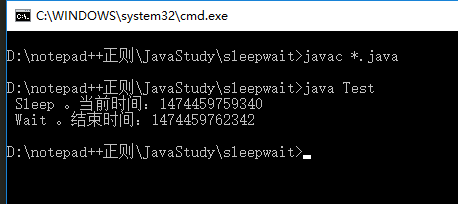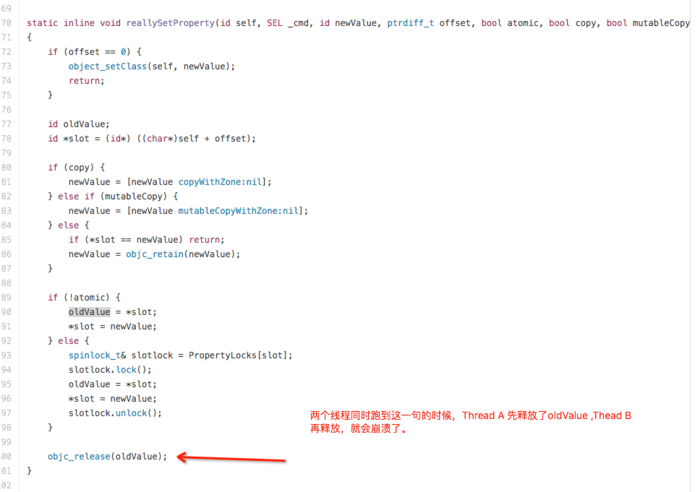流是磁盘或其它外围设备中存储的数据的源点或终点。
输入流:程序从输入流读取数据源。数据源包括外界(键盘、文件、网络…),即是将数据源读入到程序的通信通道。
输出流:程序向输出流写入数据。将程序中的数据输出到外界(显示器、打印机、文件、网络…)的通信通道。
1.InputStream、OutputStream
InputStream抽象了应用程序读取数据的方式
OutputStream抽象了应用程序写出数据的方式
2.读到文件结尾,称为EOF = end,读到-1就读到结尾
3.输入流基本方法
int b = in.read();读取一个字节,无符号填充到int的低八位.-1是EOF
int.read(byte[] buf)读取数据填充到字节数组buf
int.read(byte[] buf, int start, int size)读取数据填充到字节数组buf,从buf的start位置开始存储size长度的数据
4.输出流基本方法
out.write(int b);写出一个byte到流,b的低八位
out.write(byte[] buf);将buf字节数组都写入到流
out.write(byte[] buf, int start, int size);字节数组buf从start位置开始写size长度的字节到流
5.FileInputStream是InputStream的子类,具体实现了在文件上读取数据
6.FileOutputStream是OutputStream的子类,实现了向文件中写出字节数据的方法
FileInputStream的demo:
|
1
2
3
4
5
6
7
8
9
10
11
12
13
14
15
16
17
18
19
20
21
22
23
24
25
26
27
28
29
30
31
32
33
34
35
36
37
38
39
40
41
42
43
44
45
46
47
48
49
50
51
52
53
54
55
56
57
58
59
60
61
62
63
64
65
66
67
68
69
70
71
|
package com.test.io;
import java.io.BufferedInputStream;
import java.io.BufferedOutputStream;
import java.io.File;
import java.io.FileInputStream;
import java.io.FileOutputStream;
import java.io.IOException;
public class IOUtils {
/**
* 读取指定文件内容,按照十六进制输出到控制台
* 并且每输出10个byte换行
* @param fileName
* @throws IOException
*/
public static void printHex(String fileName) throws IOException {
//把文件作为字节流进行读操作
FileInputStream in = new FileInputStream(fileName);
int b;
int i = 1;
while ((b = in.read()) != -1) {
if (b <= 0xf) {
System.out.print("0");
}
System.out.print(Integer.toHexString(b) + " ");
if (i % 10 == 0) {
System.out.println("");
}
i++;
}
in.close();
}
public static void printHexByByteArray(String fileName) throws IOException {
FileInputStream in = new FileInputStream(fileName);
byte[] buf = new byte[20*1024];
//如果字节数组够大,可以一次性读完
//从in中批量读取字节,放入到buf这个字节数组中,从第0个位置开始放,最多放buf.length个,返回的是读到的字节的个数
/* int bytes = in.read(buf, 0, buf.length);
int j = 1;
for(int i = 0;i < bytes; i++) {
if (buf[i] <= 0xf) {
System.out.print("0");
}
System.out.print(Integer.toHexString(buf[i] & 0xff) + " ");
if (j % 10 == 0) {
System.out.println("");
}
j++;
} */
//如果字节数组不够大,不能一次性读完
int bytes = 0;
int j = 1;
while ((bytes = in.read(buf, 0, buf.length)) != -1) {
for (int i = 0; i <bytes; i++) {
if (buf[i] <= 0xf) {
System.out.print("0");
}
System.out.print(Integer.toHexString(buf[i] & 0xff) + " ");
if (j % 10 == 0) {
System.out.println("");
}
j++;
}
}
}
}
|
FileOutputStream的demo:
|
1
2
3
4
5
6
7
8
9
10
11
12
13
14
15
16
17
18
19
20
21
22
23
24
25
|
package com.test.io;
import java.io.FileOutputStream;
import java.io.IOException;
public class FileOutputDemo {
public static void main(String[] args) throws IOException {
//如果该文件不存在,则直接创建,如果存在,删除后创建。(如果第二个参数为 true,则将字节写入文件末尾处,而不是写入文件开始处。)
FileOutputStream out = new FileOutputStream("F:\\\\javaio\\\\out.dat");
out.write('A');//写入了‘A'的低八位(一次只写入一个字节)
int a = 10;
out.write(a >>> 24);
out.write(a >>> 16);
out.write(a >>> 8);
out.write(a);
byte[] b = "10".getBytes();
out.write(b);
out.close();
IOUtils.printHex("F:\\\\javaio\\\\out.dat");
}
}
|
7.DataOutputStream和DataInputStream,对流功能的扩展,可以更加方便的读取int,long,字符等类型数据。
|
1
2
3
4
5
6
7
8
9
10
11
12
13
14
15
16
17
18
19
20
21
|
package com.test.io;
import java.io.DataOutputStream;
import java.io.FileOutputStream;
import java.io.IOException;
public class DataOutputDemo {
public static void main(String[] args) throws IOException {
String file = "F:\\\\javaio\\\\b.txt";
DataOutputStream dos = new DataOutputStream(new FileOutputStream(file));
dos.writeInt(10);
dos.writeInt(-10);
dos.writeLong(10l);
dos.writeDouble(10.5);
dos.writeUTF("你好");
dos.writeChars("中国");
dos.close();
IOUtils.printHex(file);
}
}
|
运行结果:
|
1
2
3
4
|
00 00 00 0a ff ff ff f6 00 00
00 00 00 00 00 0a 40 25 00 00
00 00 00 00 00 06 e4 bd a0 e5
a5 bd 4e 2d 56 fd
|
其中,00 06两个字节是“你好”这两个中文的字节个数。
|
1
2
3
4
5
6
7
8
9
10
11
12
13
14
15
16
17
18
19
20
21
22
23
24
25
|
package com.test.io;
import java.io.DataInputStream;
import java.io.FileInputStream;
import java.io.IOException;
public class DataInputDemo {
public static void main(String[] args) throws IOException {
String file = "F:\\\\javaio\\\\b.txt";
DataInputStream dis = new DataInputStream(new FileInputStream(file));
int i = dis.readInt();
System.out.println(i);
i = dis.readInt();
System.out.println(i);
long l = dis.readLong();
System.out.println(l);
double d = dis.readDouble();
System.out.println(d);
String s = dis.readUTF();
System.out.println(s);
dis.close();
}
}
|
运行结果:
|
1
2
3
4
5
|
10
-10
10
10.5
你好
|
8.BufferedInputStream&BufferedOutputStream,这两个流类为IO提供了带缓冲区的操作,一般打开文件进行写入或读取操作时,都会加上缓冲,这种流模式提高了IO的性能。
文件的拷贝:
|
1
2
3
4
5
6
7
8
9
10
11
12
13
14
15
16
17
18
19
20
21
22
23
24
25
26
27
28
29
30
31
32
33
34
35
36
37
38
39
40
41
42
43
44
45
46
47
48
49
50
51
52
53
54
55
56
57
58
59
60
61
62
63
64
65
66
67
68
69
70
71
72
73
74
75
76
77
78
79
80
81
82
83
84
85
86
87
|
package com.test.io;
import java.io.BufferedInputStream;
import java.io.BufferedOutputStream;
import java.io.File;
import java.io.FileInputStream;
import java.io.FileOutputStream;
import java.io.IOException;
public class IOUtils {/**
* 拷贝文件,字节批量读取
* @param srcFile 源文件
* @param destFile 目标文件
* @throws IOException
*/
public static void copyFile(File srcFile, File destFile) throws IOException {
if (!srcFile.exists()) {
throw new IllegalArgumentException("文件" + srcFile + "不存在");
}
if (!srcFile.isFile()) {
throw new IllegalArgumentException(srcFile + "不是文件");
}
FileInputStream in = new FileInputStream(srcFile);
FileOutputStream out = new FileOutputStream(destFile);
byte[] buf = new byte[10*1024];
int b;
while ((b = in.read(buf, 0, buf.length)) != -1) {
out.write(buf,0,b);
out.flush();//最好加上,刷新此输出流并强制写出所有缓冲的输出字节。
}
in.close();
out.close();
}
/**
* 拷贝文件,利用带缓冲的字节流
* @param srcFile
* @param destFile
* @throws IOException
*/
public static void copyFileByBuffer(File srcFile, File destFile) throws IOException {
if (!srcFile.exists()) {
throw new IllegalArgumentException("文件" + srcFile + "不存在");
}
if (!srcFile.isFile()) {
throw new IllegalArgumentException(srcFile + "不是文件");
}
FileInputStream in = new FileInputStream(srcFile);
FileOutputStream out = new FileOutputStream(destFile);
BufferedInputStream bis = new BufferedInputStream(in);
BufferedOutputStream bos = new BufferedOutputStream(out);
int c;
while ((c = bis.read()) != -1) {
bos.write(c);
bos.flush();
}
bis.close();
bos.close();
}
/**
* 拷贝文件,通过单字节读取
* @param srcFile
* @param destFile
* @throws IOException
*/
public static void copyFileByByte(File srcFile, File destFile) throws IOException {
if (!srcFile.exists()) {
throw new IllegalArgumentException("文件" + srcFile + "不存在");
}
if (!srcFile.isFile()) {
throw new IllegalArgumentException(srcFile + "不是文件");
}
FileInputStream in = new FileInputStream(srcFile);
FileOutputStream out = new FileOutputStream(destFile);
int c;
while ((c = in.read()) != -1) {
out.write(c);
out.flush();
}
in.close();
out.close();
}
}
|
测试文件拷贝:
|
1
2
3
4
5
6
7
8
9
10
11
12
13
14
15
16
17
18
19
20
21
|
package com.test.io;
import java.io.File;
import java.io.IOException;
public class IOUtilsTest {
public static void main(String[] args) {
//IOUtils.printHex("D:\\\\javaProgram\\\\Hello.java");
try {
long start = System.currentTimeMillis();
//IOUtils.copyFile(new File("F:\\\\javaio\\\\1.mp3"), new File("F:\\\\javaio\\\\2.mp3"));//211ms
//IOUtils.copyFileByBuffer(new File("F:\\\\javaio\\\\1.mp3"), new File("F:\\\\javaio\\\\3.mp3"));//18583ms
IOUtils.copyFileByByte(new File("F:\\\\javaio\\\\1.mp3"), new File("F:\\\\javaio\\\\4.mp3"));//37822ms
long end = System.currentTimeMillis();
System.out.println(end - start);
} catch (IOException e) {
e.printStackTrace();
}
}
}
|
根据以上测试看出,文件拷贝,最快的方式是通过字节的批量读取。
感谢阅读,希望能帮助到大家,谢谢大家对本站的支持!
原文链接:http://www.cnblogs.com/tianxintian22/p/6821267.html
相关文章
- 64M VPS建站:能否支持高流量网站运行? 2025-06-10
- 64M VPS建站:怎样选择合适的域名和SSL证书? 2025-06-10
- 64M VPS建站:怎样优化以提高网站加载速度? 2025-06-10
- 64M VPS建站:是否适合初学者操作和管理? 2025-06-10
- ASP.NET自助建站系统中的用户注册和登录功能定制方法 2025-06-10
- 2025-07-10 怎样使用阿里云的安全工具进行服务器漏洞扫描和修复?
- 2025-07-10 怎样使用命令行工具优化Linux云服务器的Ping性能?
- 2025-07-10 怎样使用Xshell连接华为云服务器,实现高效远程管理?
- 2025-07-10 怎样利用云服务器D盘搭建稳定、高效的网站托管环境?
- 2025-07-10 怎样使用阿里云的安全组功能来增强服务器防火墙的安全性?
快网idc优惠网
QQ交流群
-
2025-05-29 53
-
2025-05-27 70
-
2025-05-29 59
-
2025-05-25 92
-
2025-05-29 37












